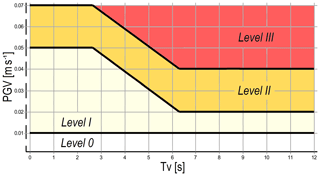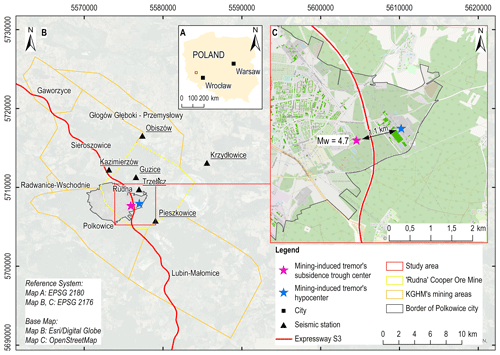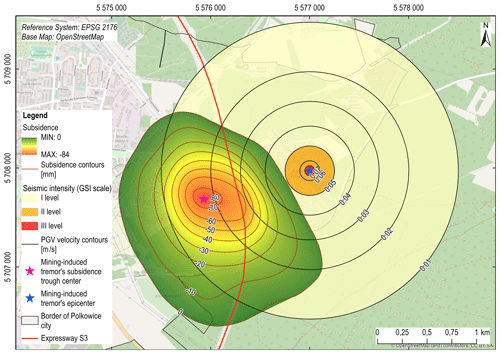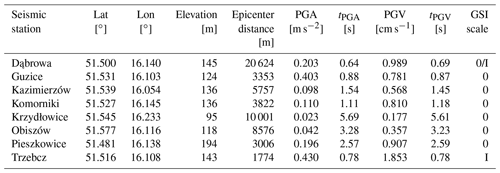Identification of the ground movements caused by mining-induced seismicity with the satellite interferometry
The assessment of the impact of mining-induced seismicity on the natural environment and infrastructure is often limited to the analysis of terrain surface vibrations. However, similar seismic phenomena, like earthquakes, may also imply dislocations and deformations of the rock mass. Such ground movements may occur in areas which are not directly under the influence of the mining. The study of the displacement field caused by mining-induced seismicity is usually carried out with the use of geodetic methods. Classical geodetic measurements provide discrete information about observed ground movements. As a result, they generally do not provide spatially and temporally relevant estimates of the total range and values of ground movements for specific periods of interest. Moreover, mining-induced seismicity causes a severe threat to buildings. That is why, regarding the complexity of the mechanism of occurrence of mining-induced seismicity and their impact on ground movements, this problem remains a substantial research issue. The presented research aimed to analyse the ground movements caused by mining-induced seismicity. The ground displacements were established based on data from Sentinel-1 satellites applying differential interferometric synthetic aperture radar (DInSAR). The results of the investigation in the copper mining area of the Lower Silesia region of Poland revealed that the observed subsidence caused by mining-induced seismicity usually has a shape of a regular ellipse. The radius of these ground movements does not exceed approximately 2–3 km from the mining-induced tremor's epicenter, and the total subsidence reaches ca. 10–20 cm. More than 50 % of the total subsidence is observed on the surface within a few days after the mining tremor occurrence. Furthermore, the deformations of the surface occur when the energy of mining-induced tremor reaches values of the order of 105 J or higher. The presented research can contribute to better identification and evaluation of the mechanism of the rock mass deformation process caused by mining-induced seismicity. In addition, the use of satellite radar interferometry improves the quality of monitoring of these dynamic phenomena significantly. The data retrieved using this method allow for quasi-continuous monitoring of the local subsidence bowls caused by mining-induced seismicity.










